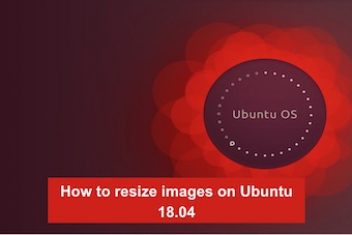It is difficult to describe in words how excited we were when we learned that a new framework has appeared, with which it is now possible to develop mobile applications for many platforms at the same time. Its name is React Native.The ability to expand an app for both iOS and Android with only a few native development resources offers up a world of possibilities when you have a single team, a single code base, and the flexibility to do so with just a few native development resources.
Only a few years ago, all developers had to organize separate teams to produce apps for the various platforms, such as iOS and Android. This was a requirement for gaining access to a high-quality market. For a variety of reasons, maintaining two nearly similar teams was both costly and cumbersome. This was especially felt when it was necessary to constantly update and introduce new functions.
But Facebook has released React Native, a powerful framework with which you can simultaneously work on different platforms. A lot of time has passed since that moment, and now we can say with precision what pluses and minuses it has.
React Native development company Fireart has written this post to inform you of the benefits and drawbacks of this framework so that you can decide whether or not to use it.
Read: 8 Programming Languages that Every Teachie Should Master
What are the pros of React Native
- Time to develop is short.
The most significant benefit of React Native is its quick development time. Many components are already pre-built and ready to use in the library, which can assist speed up the development process.
Yes, it does not contain all conceivable answers, so expect to have to start from scratch at some point. React Native, on the other hand, is built on JavaScript, which gives it access to the world’s biggest packaging system. You may forget about the time-consuming manual coding from start now that you have access to such a large ecosystem of packages, and save a lot of time using a handy framework like React Native.
We hope that one day we will be able to find ready-made components for all the solutions we need, and then there will be no work left for the developers. Joke.
According to tests, building the identical app using React Native and another similar framework, such a Swift takes drastically different amounts of time. Swift also allows for the creation of a single platform application. This demonstrates how RN can help you save a lot of time and money.
- Multiplatform in action.
RN has an astounding ability – it’s repetitive using your codebase or some part of it on many platforms. Practically, this is possible (full-fledged cross-platform development), but it is worth considering the number of modules that you are going to use when writing your application.
The React Native community is always adding new tools to the framework because it is open source. However, you still need to know that you will have to write some functions yourself from scratch.
It is now feasible to share the codebase thanks to the availability of JavaScript development. And it’s not only on mobile platforms; it’s also in online apps. Because their technologies are so comparable, it’s great that it’s now feasible to work on web and mobile applications with the same engineers.
Read: A Brief Overview of Software Development Methodologies
While the framework is known for the instability of such decisions, the ability to write collaborative code that isn’t dependent on the user interface has a lot of advantages. This not only cuts down on runtime, but also enhances the application’s business logic consistency, which will be supported across all platforms.

- Quick update
The big community appreciates the React Native team’s responsiveness. The Hot Reload feature was not operating properly, which was one of the community questions had. As a result, several improvements have simply disabled it. The team responded by releasing a new update dubbed Fast Refresh. Its goal is to resolve any difficulties relating to Hot Reload. It also facilitates communication with developers all around the world, which speeds up the addition of new features and problem fixes to the framework.
Read: How Learning a Language Can Help you Become a Better Programmer
Let’s speak about React Native’s drawbacks in terms of compatibility and troubleshooting
- It may come as a surprise that React Native is still in beta testing. During the creation of an application, you may encounter a variety of challenges relating to package compatibility and debugging tools. Troubleshooting these problems might be a huge waste of time.
- There are a few custom modules that are missing. We’re sorry to say, but React Native currently missing a few key components. Those that are present are likely to be undeveloped. You might not even encounter this issue because most custom modules continue to function normally. But there is such an option that you will lack existing solutions and have to create them from scratch or break existing ones.
- Additional help may be needed. Some built-in functions and modules will need specialized understanding, development of the platform. The lack of push notifications and other OOTB or off the shelf was a major issue during the development of React Native in the past. However, as the community grew more active, additional an open-source license arose to allow simple access to the platform’s features. However, certain more sophisticated projects may necessitate the assistance of other iOS and Android developers.
Read: Top 7 Programming Languages to Learn in 2021
Sum up
Before you begin working with such a program like React Native, one of the most widely used cross-platform applications frameworks today, you should research all the pros and cons and drawbacks outlined above.
The most notable advantages of React Native today are its ability to create quickly in not large companies, reusable code across different platforms, and the availability of several useful tools.
It is possible to uncover certain issues in beta testing due to the technology’s immaturity, but we anticipate that they will become less significant in the near future.
Speaking of React Native in general, Fireart believes in its bright future in bright colors. His community is growing every day and is developing in huge strides.
If you like the content, we would appreciate your support by buying us a coffee. Thank you so much for your visit and support.



